
How to Use Drv8833: Examples, Pinouts, and Specs
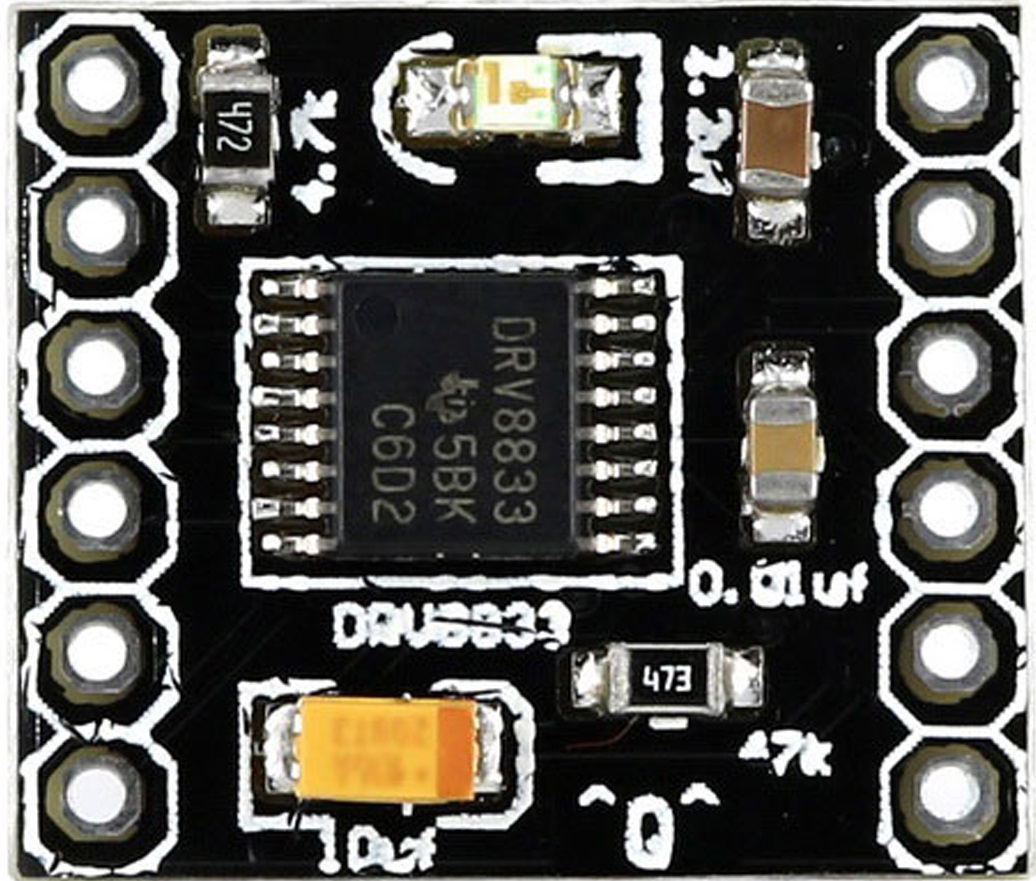
 Design with Drv8833 in Cirkit Designer
Design with Drv8833 in Cirkit DesignerIntroduction
The DRV8833 is a dual H-bridge motor driver designed to control two DC motors or a single stepper motor. It operates within a voltage range of 2.7V to 10.8V and can deliver up to 1.5A of continuous current per channel. This compact and efficient motor driver is equipped with built-in protection features, including overcurrent protection and thermal shutdown, ensuring reliable operation in demanding environments.
Explore Projects Built with Drv8833
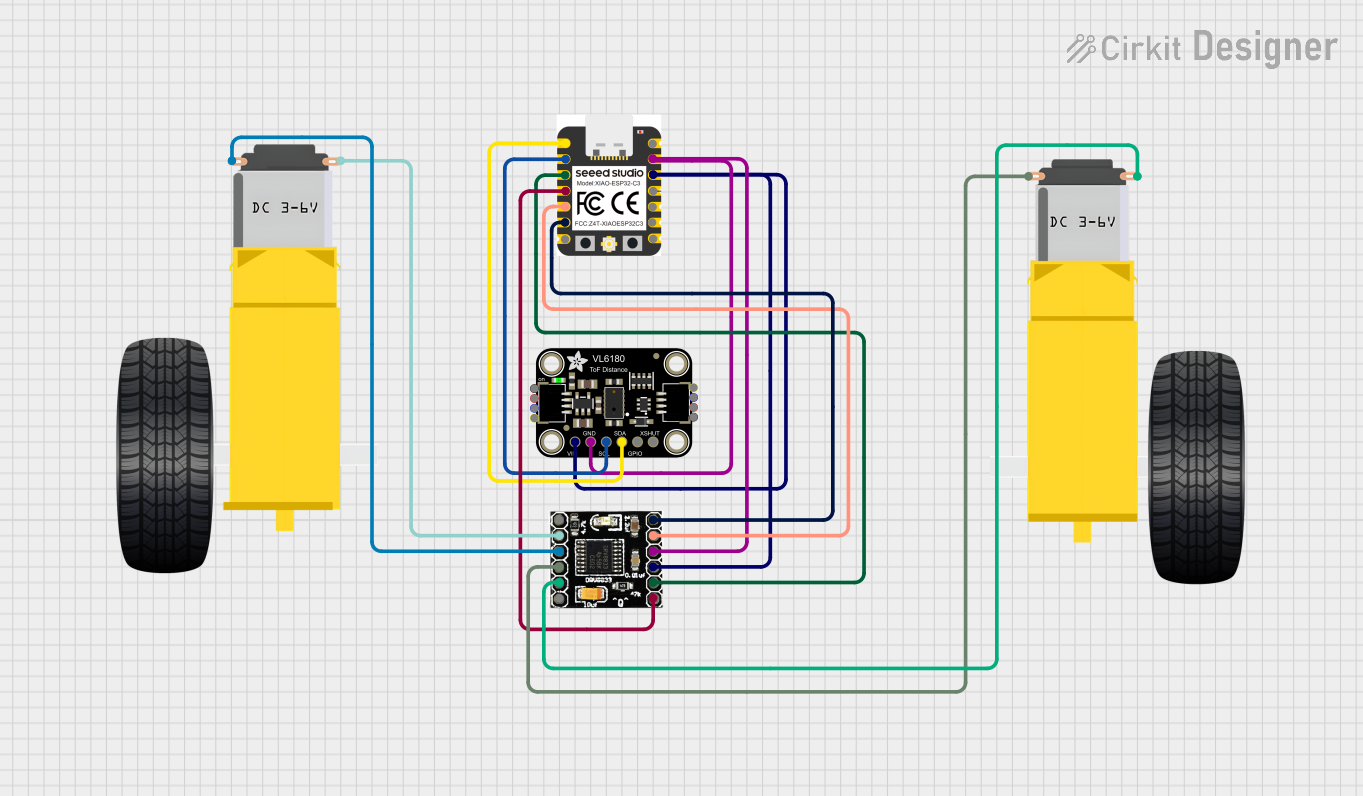
 Open Project in Cirkit Designer
Open Project in Cirkit Designer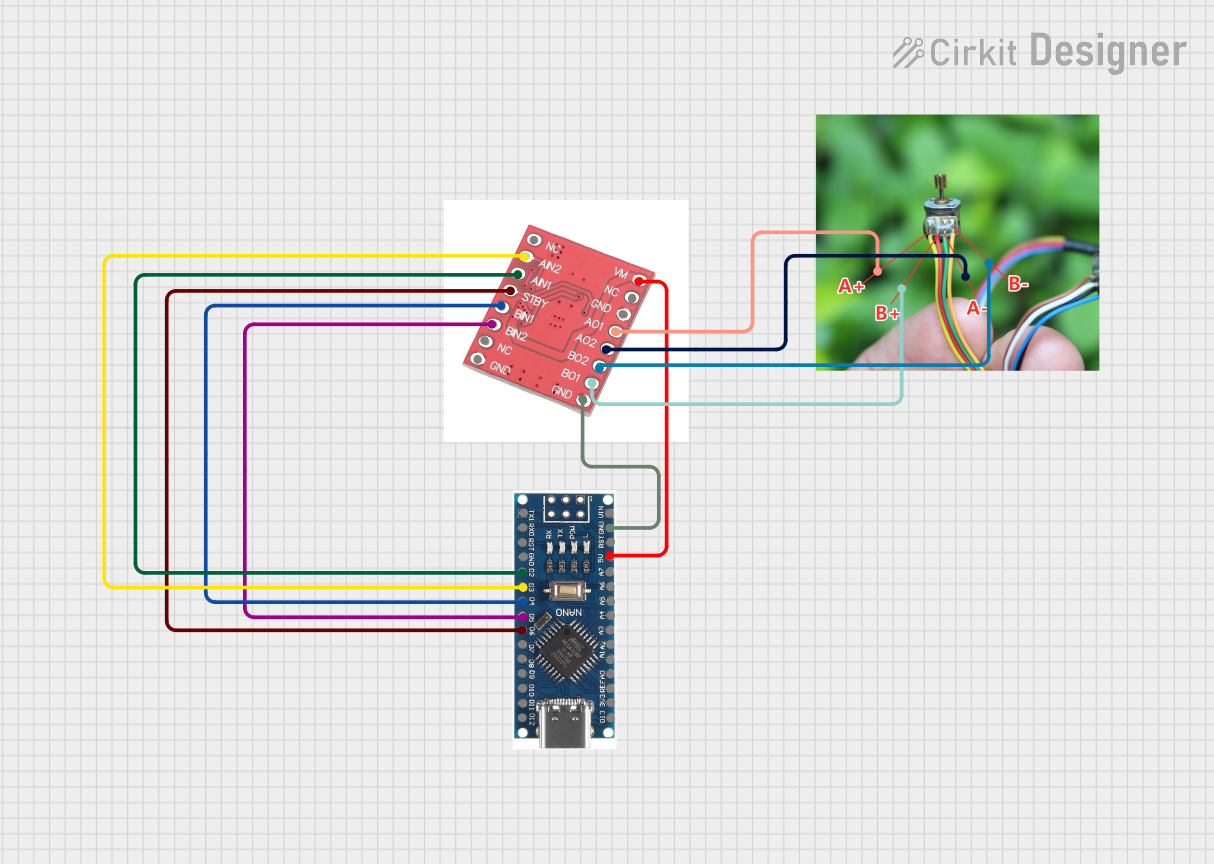
 Open Project in Cirkit Designer
Open Project in Cirkit Designer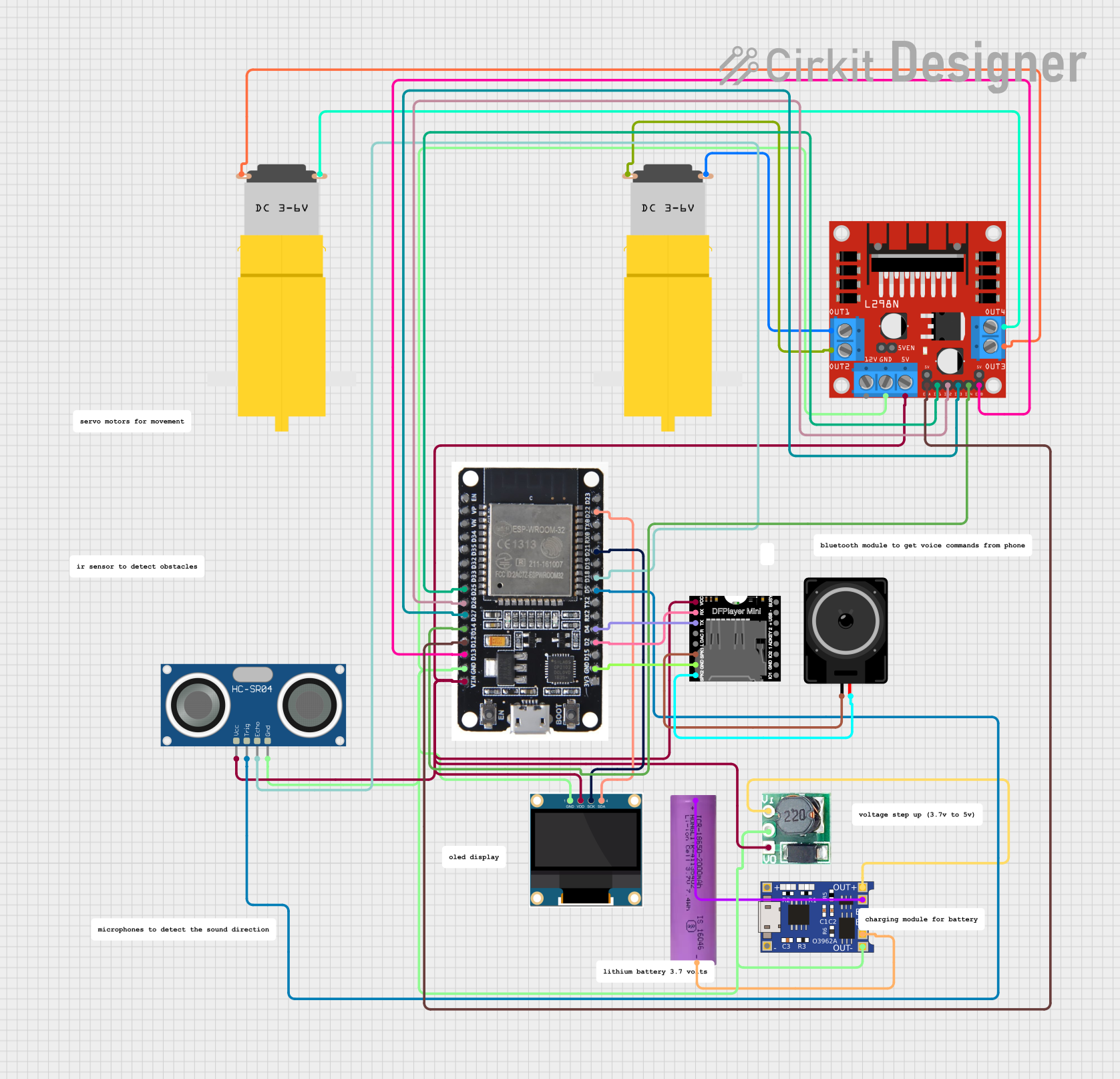
 Open Project in Cirkit Designer
Open Project in Cirkit Designer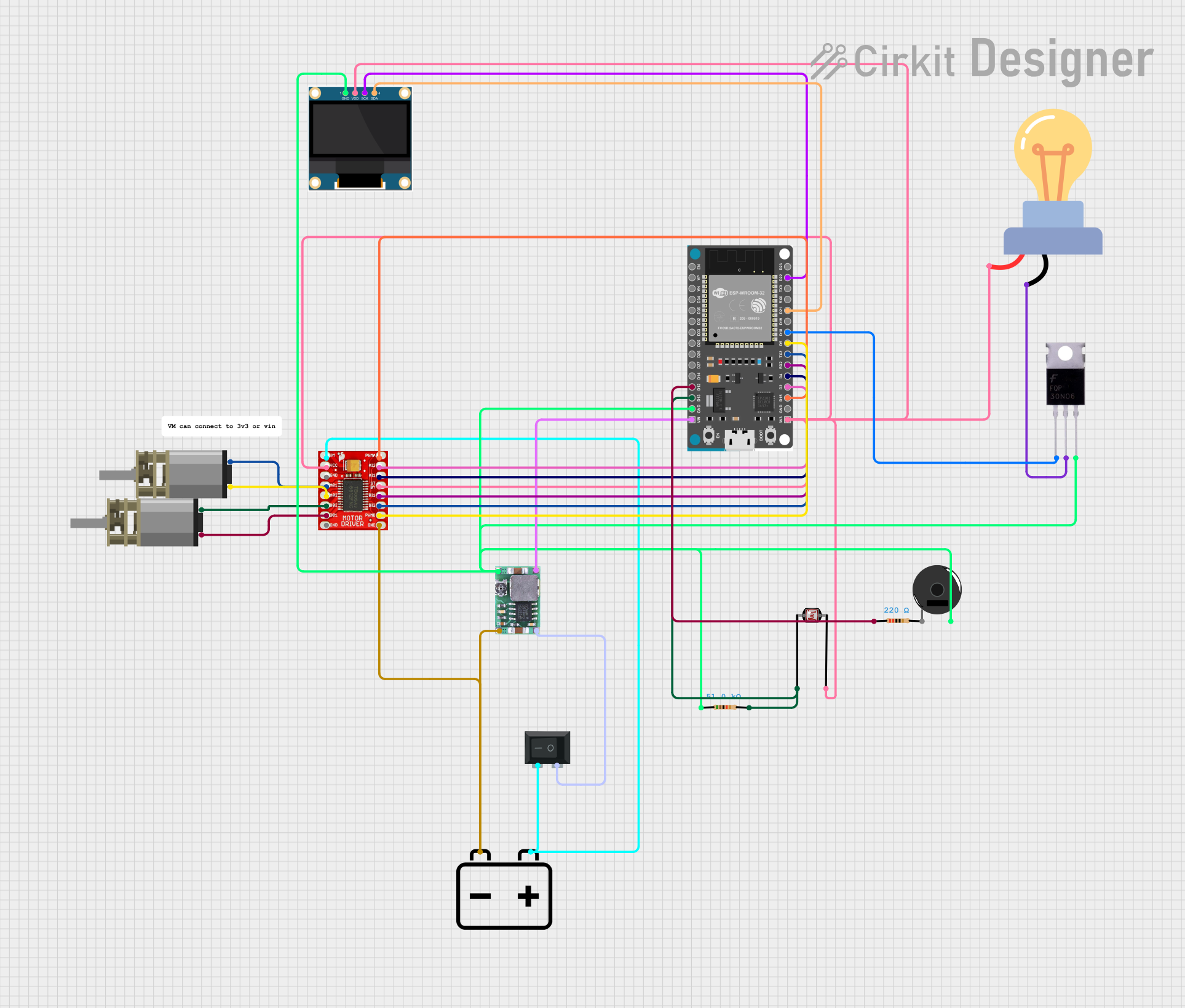
 Open Project in Cirkit Designer
Open Project in Cirkit DesignerExplore Projects Built with Drv8833

 Open Project in Cirkit Designer
Open Project in Cirkit Designer
 Open Project in Cirkit Designer
Open Project in Cirkit Designer
 Open Project in Cirkit Designer
Open Project in Cirkit Designer
 Open Project in Cirkit Designer
Open Project in Cirkit DesignerCommon Applications and Use Cases
- Robotics and automation systems
- Remote-controlled vehicles
- Conveyor belts and small industrial machines
- DIY electronics projects
- Stepper motor control for 3D printers and CNC machines
Technical Specifications
Key Technical Details
| Parameter | Value |
|---|---|
| Motor Driver Type | Dual H-Bridge |
| Operating Voltage Range | 2.7V to 10.8V |
| Continuous Current (per channel) | 1.5A |
| Peak Current (per channel) | 2A |
| Logic Voltage Range | 1.8V to 7V |
| PWM Frequency | Up to 250 kHz |
| Built-in Protections | Overcurrent, Thermal Shutdown |
| Package Type | HTSSOP-16 |
Pin Configuration and Descriptions
The DRV8833 comes in a 16-pin HTSSOP package. Below is the pinout and description:
| Pin Number | Pin Name | Description |
|---|---|---|
| 1 | AIN1 | Input 1 for H-Bridge A (controls motor direction) |
| 2 | AIN2 | Input 2 for H-Bridge A (controls motor direction) |
| 3 | AVREF | Reference voltage for H-Bridge A (sets motor speed via PWM) |
| 4 | AGND | Ground for H-Bridge A |
| 5 | AO1 | Output 1 for H-Bridge A (connect to motor terminal) |
| 6 | AO2 | Output 2 for H-Bridge A (connect to motor terminal) |
| 7 | VM | Motor power supply (2.7V to 10.8V) |
| 8 | PGND | Power ground |
| 9 | BO2 | Output 2 for H-Bridge B (connect to motor terminal) |
| 10 | BO1 | Output 1 for H-Bridge B (connect to motor terminal) |
| 11 | BGND | Ground for H-Bridge B |
| 12 | BVREF | Reference voltage for H-Bridge B (sets motor speed via PWM) |
| 13 | BIN2 | Input 2 for H-Bridge B (controls motor direction) |
| 14 | BIN1 | Input 1 for H-Bridge B (controls motor direction) |
| 15 | nSLEEP | Sleep mode control (active low, pull high to enable the driver) |
| 16 | nFAULT | Fault output (active low, indicates fault conditions like overcurrent) |
Usage Instructions
How to Use the DRV8833 in a Circuit
- Power Supply: Connect the motor power supply (VM) to the VM pin. Ensure the voltage is within the range of 2.7V to 10.8V. Connect the ground of the power supply to PGND.
- Logic Inputs: Use the AIN1, AIN2, BIN1, and BIN2 pins to control the direction of the motors. These pins accept logic levels between 1.8V and 7V.
- Motor Connections: Connect the motor terminals to AO1/AO2 for Motor A and BO1/BO2 for Motor B.
- PWM Control: Apply a PWM signal to the AVREF and BVREF pins to control motor speed.
- Sleep Mode: Pull the nSLEEP pin high to enable the driver. Pull it low to put the driver into low-power sleep mode.
- Fault Monitoring: Monitor the nFAULT pin for fault conditions. If the pin is pulled low, check for overcurrent or thermal shutdown.
Important Considerations and Best Practices
- Use decoupling capacitors (e.g., 0.1µF and 10µF) close to the VM pin to stabilize the power supply.
- Avoid exceeding the maximum current rating of 1.5A per channel to prevent damage.
- Ensure proper heat dissipation, especially when driving motors at high currents.
- Use pull-up resistors on the nSLEEP and nFAULT pins if required by your circuit design.
Example: Using DRV8833 with Arduino UNO
Below is an example of controlling a DC motor using the DRV8833 and Arduino UNO:
// Define motor control pins
const int AIN1 = 9; // Connect to DRV8833 AIN1 pin
const int AIN2 = 10; // Connect to DRV8833 AIN2 pin
const int PWMA = 3; // Connect to DRV8833 AVREF pin (PWM control)
void setup() {
// Set motor control pins as outputs
pinMode(AIN1, OUTPUT);
pinMode(AIN2, OUTPUT);
pinMode(PWMA, OUTPUT);
}
void loop() {
// Rotate motor forward
digitalWrite(AIN1, HIGH); // Set AIN1 high
digitalWrite(AIN2, LOW); // Set AIN2 low
analogWrite(PWMA, 128); // Set motor speed (0-255)
delay(2000); // Run motor for 2 seconds
// Rotate motor backward
digitalWrite(AIN1, LOW); // Set AIN1 low
digitalWrite(AIN2, HIGH); // Set AIN2 high
analogWrite(PWMA, 128); // Set motor speed (0-255)
delay(2000); // Run motor for 2 seconds
// Stop motor
digitalWrite(AIN1, LOW); // Set AIN1 low
digitalWrite(AIN2, LOW); // Set AIN2 low
analogWrite(PWMA, 0); // Set motor speed to 0
delay(2000); // Wait for 2 seconds before repeating
}
Troubleshooting and FAQs
Common Issues and Solutions
Motor Not Spinning:
- Ensure the nSLEEP pin is pulled high to enable the driver.
- Verify that the motor power supply (VM) is connected and within the specified voltage range.
- Check the logic input pins (AIN1, AIN2, BIN1, BIN2) for proper signals.
Overheating:
- Ensure the current drawn by the motor does not exceed 1.5A per channel.
- Improve heat dissipation by using a heatsink or ensuring proper ventilation.
nFAULT Pin Pulled Low:
- Check for overcurrent or thermal shutdown conditions.
- Reduce the motor load or allow the driver to cool down before restarting.
PWM Control Not Working:
- Verify that the PWM signal is connected to the AVREF or BVREF pins.
- Ensure the PWM frequency is within the supported range (up to 250 kHz).
FAQs
Q: Can the DRV8833 drive a stepper motor?
A: Yes, the DRV8833 can drive a single bipolar stepper motor by using both H-bridges. You will need to sequence the inputs (AIN1, AIN2, BIN1, BIN2) appropriately to control the stepper motor.
Q: What happens if the motor draws more than 1.5A?
A: The DRV8833 has built-in overcurrent protection. If the current exceeds the limit, the driver will shut down to protect itself. Reduce the motor load or use a motor with lower current requirements.
Q: Can I use the DRV8833 with a 3.3V microcontroller?
A: Yes, the DRV8833 supports logic levels as low as 1.8V, making it compatible with 3.3V microcontrollers.